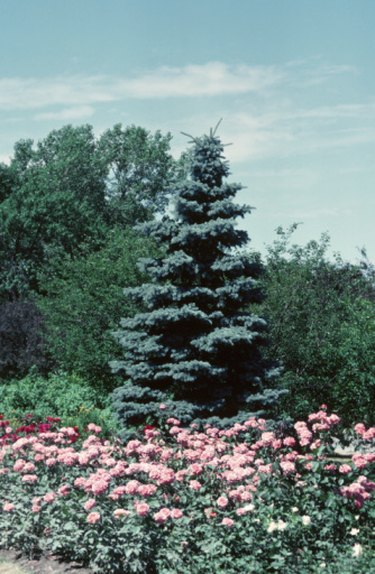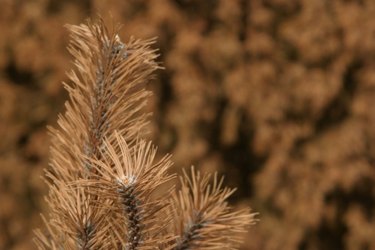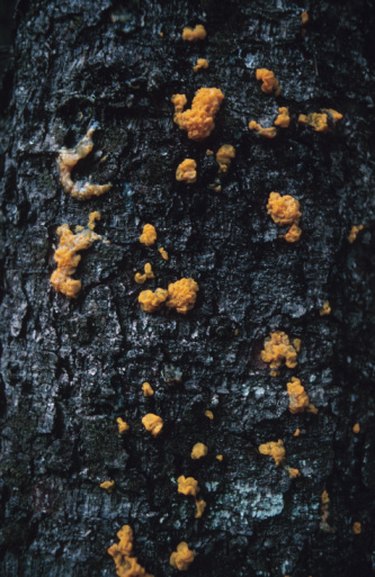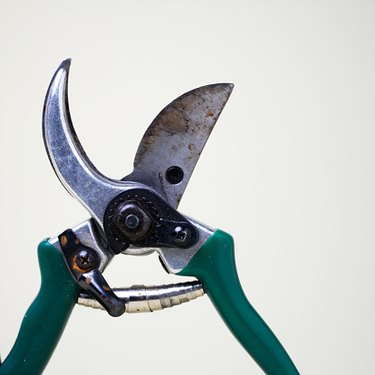
A wide range of diseases, mostly fungal in origin, can cause yellow needles to develop on blue spruce trees. Treatment varies depending on disease, but in all cases, preventative measures, such as selecting blue spruces from a reputable grower and not planting in areas where yellow needles has been a problem in previous years, are helpful.
Rhizosphaera Needle Cast
Video of the Day

Rhizosphaera needle cast is a fungal disease that causes blue spruce needles to turn yellow in the summer, before turning them red to purple in the fall. Infected needles eventually drop off. Rhizosphaera needle cast can eventually kill a blue spruce if untreated. Repeated applications of fungicide can usually restore an infected blue spruce back to health. Spray when new growth is at about half of its anticipated growth and then again when the needles have attained their full growth for the year. Repeat for two years in most cases; longer if disease is persistent.
Video of the Day
Lirula Needle Blight

Lirula needle blight is a fungal disease that first presents on two-year-old needle growth. These affected needles turn yellow or brown in late summer. The following year, the infected needles develop a black line on them. In subsequent years, the needles stay attached but turn purple to gray. Lirula needle blight can be prevented on blue spruce by spraying trees with a fungicide containing the active ingredient chlorothalonil or a Bordeaux mixture when new growth is approximately half of its expected growth for that year. Spray again one month later and repeat for the next two years.
Spruce Needle Rust

Spruce needle rust is a fungal disease that attacks the current year's growth. Symptoms entail needle tips turning yellow. By mid-summer, small orange or white growths project from the infected needles. These growths contain the fungal spores that are orange in color. Discolored needles will fall off in September. Spruce needle rust is usually not serious and usually only compromises the aesthetic value of the blue spruce. Prune out infected branches to help control its spread.
Cytospora Canker

Cytospora canker not only affects spruce needles, but can eventually kill a blue spruce branch by branch. Symptoms of blue spruce infected with Cytospora canker begin at the bottom branches of the trees. Needles on affected limbs turn yellow or brown and may fall off. There is no chemical control for this disease. Infected trees should have the affected branches removed, cutting back to the next living bud or the main trunk. Fertilize to try to stimulate new growth.
- University of Minnesota Extension; Diseases of Spruce Trees in Minnesota; Michelle Grabowski, et al.; 2009
- University of Florida IFAS Extension; Picea pungens: Colorado Spruce; Edward F. Gilman, et al.; November 1993
- University of Illinois Extension: Cytospora Canker of Spruce
- New Mexico State University; Needle Cast Disease of Blue Spruce; Wolf, et al.; May 2001
- University of Wisconsin: Picea pungens - Adaptations and Interactions